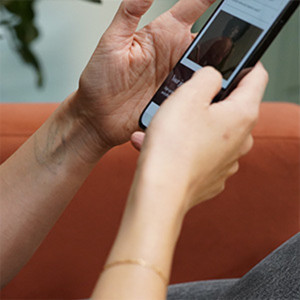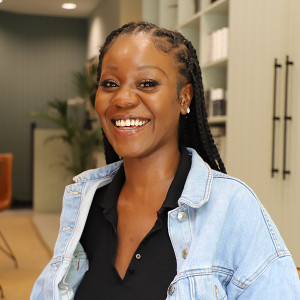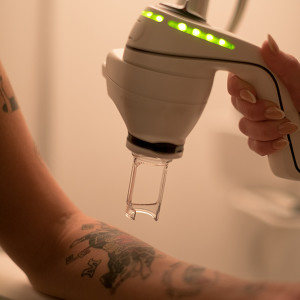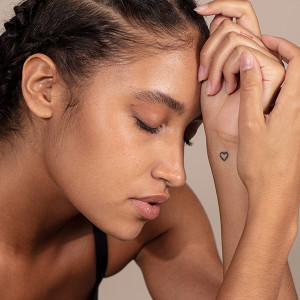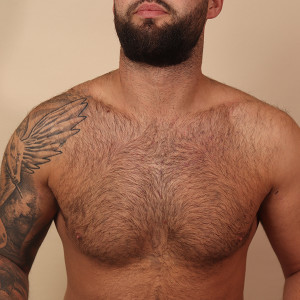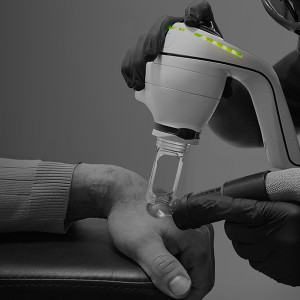Aftercare 101: Tattoo removal aftercare tips
When you embark on your laser tattoo removal journey, it’s important to look after your skin and your overall health.
It’s about helping your immune system process your ink out of the body efficiently. So, aftercare involves much more than skincare. We’ve put together this guide to help you through the holistic process.
Publish Date in article
Protecting the treated area
After each laser tattoo removal treatment, the treated area will be wrapped in a specialist dressing. Waterproof dressings and plurogels help maintain a healing environment while still letting air in - the best way to allow the skin to heal. It is important to note that we do not use cling film to wrap the treatment area. Unlike cling film, our dressings are made with a membrane covered in microscopic air holes too small for water molecules to pass through but large enough for oxygen to enter making them both waterproof & breathable. This helps your skin recover quickly. They’re medical-grade, transparent, and should be left on for 72 hours.
They’re designed for easy removal; you simply lift an edge away from the skin, grip the dressing and stretch away from the hydrogel patch, parallel to the skin. This releases the adhesive, allowing it to come off without irritation.
Looking after the treated area
Wash the treated area twice a day with water and a gentle cleanser, avoiding perfumed products that could cause some sensitivity.
You could use NAAMA’s skincare range. Our Aftercare Cream protects, soothes and stimulates circulation in the treatment area. Our Regeneration Cream enhances the natural rejuvenating power of the skin and rebalances the skin's barrier.
It’s crucial you keep your skin clean so make sure you avoid public baths, swimming pools and hot tubs until the area has healed. It’s also advisable to avoid excess heat so steer clear of saunas, steam rooms and sun beds throughout your treatment journey.
What to expect during healing
Don’t pick or scratch the treated area; if it feels itchy, use an ice pack to soothe your skin. You may experience some sensitivity on the treated area - this is normal. If you’re looking after the tattooed area, these symptoms will cease within the first day or so. However, if you notice signs of an infection such as increasing redness, pain, swelling or pus, you should contact your GP. With NAAMA's LightSense™ laser system, this is really unlikely to happen, but do act quickly if you notice these signs.
If you do have any questions regarding the healing process our team of experts are on hand to help you with any queries. You can contact the team via hello@naamastudios.com or call us on 07429 983355.
Looking after the treated area
Wash the treated area twice a day with water and a gentle cleanser, avoiding perfumed products that could cause some sensitivity.
You could use NAAMA’s skincare range. Our Step 1 Protect Cream protects, soothes and stimulates circulation in the treatment area. Our Step 2 Restore Cream enhances the natural rejuvenating power of the skin and rebalances the skin's barrier.
It’s crucial you keep your skin clean after your laser tattoo removal treatments so make sure you avoid public baths, swimming pools and hot tubs until the area has healed. It’s also advisable to avoid excess heat so steer clear of saunas, steam rooms and sun beds throughout your treatment journey.
These products nourish your skin throughout the laser removal process. They contain all-natural vegan ingredients that are easily absorbed by the skin.
What to wear
Clothing wise, it’s best to wear loose clothing for the first couple of days after your session. It’s also better to stick to natural materials such as cotton, linen, silk and wool and avoid man-made fabrics. This avoids any possible irritation and keeps your treated skin cool and comfortable.
Sun protection
Unlike other laser tattoo removal systems that can burn and damage the skin, with NAAMA’s unique technology, there is no need to avoid the sun completely whilst undergoing treatment. Simply use a sun-safe skincare routine and apply a moisturising sunscreen with a high SPF and UVA 4* and above throughout your treatment journey. Avoid direct exposure to strong sunlight in the days immediately following your treatment as exposing your skin to direct sunlight without protection whilst it is still recovering can lead to pigmentation changes. Please note, if you are treating coloured ink and tan deeply between sessions, we may need to reassess your treatment schedule. Please contact your consultant in this instance.
Staying healthy
To get the best results from your tattoo removal, your immune system must be optimised and working efficiently. It’s how your body provides resistance to infection and toxins and involves several organs and processes. Your lymphs play the biggest role when it comes to laser tattoo removal. The lymphatic system sends white blood cells to attack the ink pigments which have been broken down by the laser and carries them away to be processed out of the body. There’s lots we can’t control about laser tattoo removal - our genetics, the type of ink in the tattoo and the techniques used by the tattoo artist. But we can control lifestyle factors. Here’s what you can do to help make sure your immune system is in the best shape possible.
Publish Date in article
Drink water
Around 95 percent of the fluid in the lymph system is water, so it’s important you stay hydrated. This helps the system work more efficiently. It is recommended to drink 6-8 glasses of water a day, that’s approximately 1.5 to 2 litres.
Get moving
Contraction of the muscles and joints propel fluid through the lymph system, making it work better and faster, so regular exercise is recommended.
Avoid smoking, limit alcohol
Cutting down toxins reduces the burden on your system, leaving more capacity to clear your ink. Drinking large amounts of alcohol can hinder the ability of the liver & kidneys to flush out the ink molecules, whilst smoking can reduce circulation at the surface of the skin, making it harder for the body to carry away the shattered ink molecules.
Eat well
Eating food high in nutrients keeps your whole immune system strong. Think leafy greens, nuts, fatty fish, citrus fruit, whole grains and dark chocolate.
Try not to stress
Stress causes lymph congestion, which makes the whole system less efficient. Try meditation, yoga and moving your body. Laughter is good medicine too.

